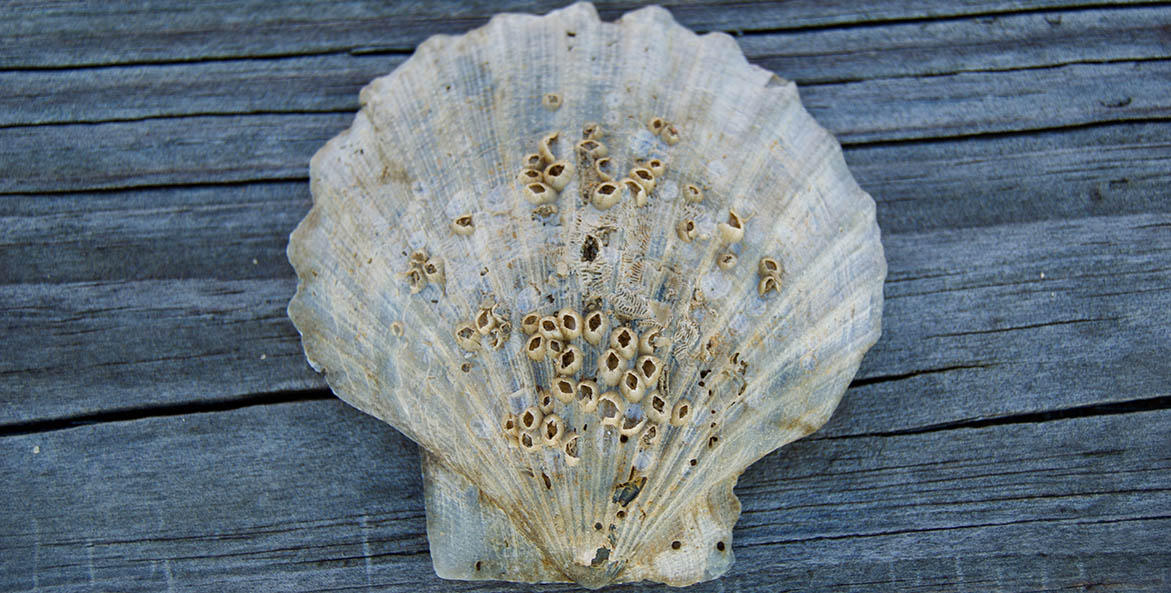See the complete Nature Journaling series.
Humans have lived around the Chesapeake Bay region for at least 12,000 years. Their past existence is reflected in the remnants they left behind. Whether it was Native Americans from the Algonquin Tribe, European settlers, Chesapeake pirates, or the animals that once inhabited the area, pieces of these past lives reveal themselves to us with the tides. Over the years, a habit has developed by those curious about the past and what remains called beachcombing. However, the local term progging (or proggin' in the local dialect) comes from an old English word meaning to poke or to prod. It is typically used by the inhabitants of islands in the Chesapeake like Tangier and Smith and is a common pastime of those who spend time near the Bay.
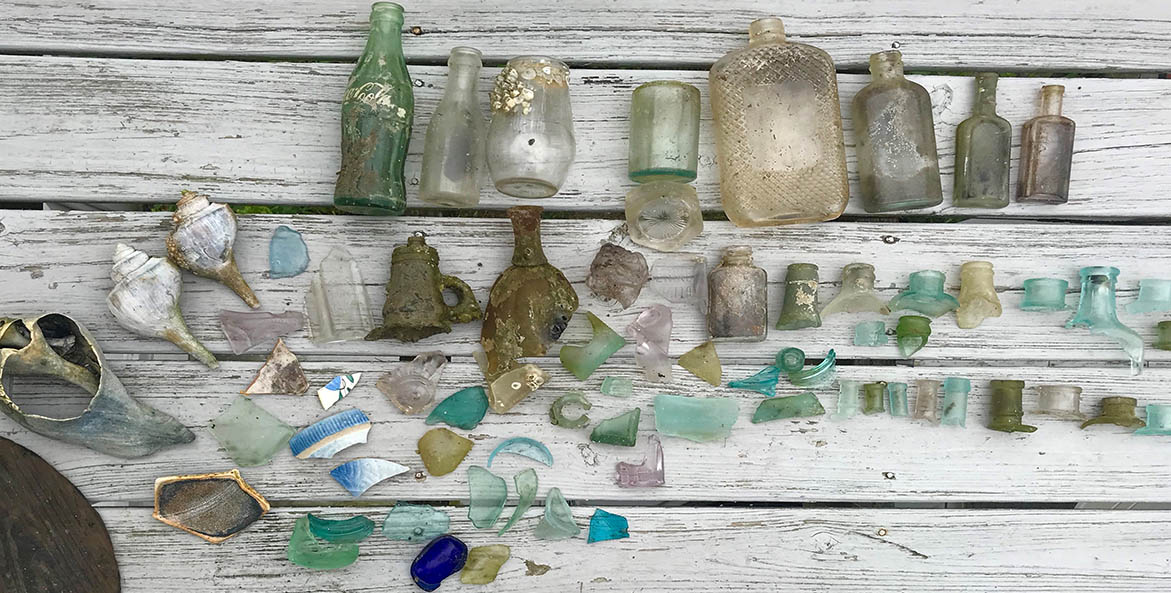
Shells, ceramic pieces, glass shards, and complete bottles are some of the treasures you may encounter proggin'.
Morgan Jones/CBF Staff
Proggin' is best done at low tide, after a big storm, or early in the morning but can really be done at any time. It involves walking an area of shoreline, keeping your gaze down, and running your eyes over the section of land in front of you until something interesting catches your attention. There is nothing in particular you should be looking for. Your proggin' treasures could be thousands of years old or something from modern times. You could find the remnants of an animal, human, or plant, or it could be a mystery. You might pick up your find, hold it briefly, and toss it back, or you might keep it as a valued treasure. Regardless, of what you find, everything has a story. The beauty of proggin' is not necessarily knowing the full story behind the item you have found but using your imagination to think of where it came from. How old is it? Who was the last person to hold it? How did it end up in this location? Often times, the items one finds can tell them more about the place they are in. Some beaches might have a lot of trash and be polluted by humans. Other areas might have hundreds of broken eggshells from the diamondback terrapins that hatched from their nests there. Or, perhaps an area is known to hold arrowheads and spearpoints from its time as a common American Indian hunting ground. If we, as humans, can pay close attention to the things we are finding in an area, we can learn a lot more about what once was.
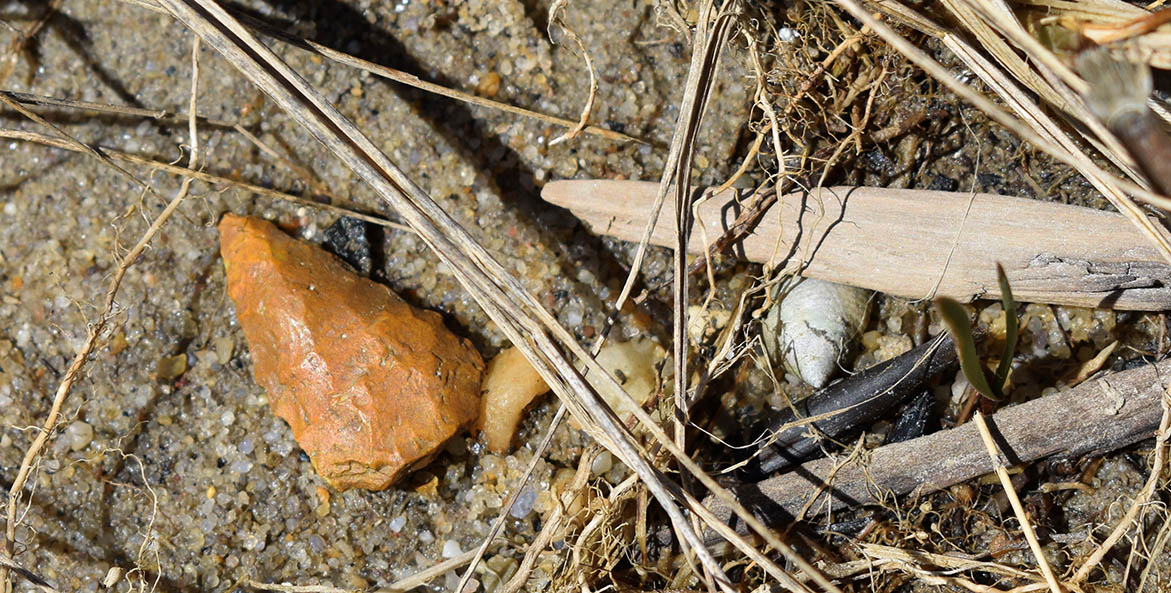
A hard-to-find arrowhead lays concealed in other seashore debris.
Morgan Jones/CBF Staff
Art Prompt: Proggin' Mandalas
Materials Needed: nature journal or paper, pen or pencil, coloring materials*, a proggin' bag*, a camera/phone*
Assignment: Proggin' in different areas can result in the discovery of different things. Although proggin' is usually done on a shoreline, you can really go anywhere and start searching around. Forests might offer interesting sticks, big leaves, a piece of a bird's nest, or a smooth rock. A park or field might host beautiful types of flowers, a mysterious animal bone, an old coin, or a brick from a house foundation. Shorelines could give way to weathered sea glass, an oyster shell, a twisted piece of driftwood, or a dainty piece of pottery. Wherever you are able, choose a spot to go proggin'. Make sure you find a safe area to begin your search.
Start to walk around and explore. It may help to bring a bag to carry your treasures. Begin to collect things that interest you or catch your eye and place them in your bag or pockets. Make sure to collect a variety of items that are different sizes, shapes, and colors. Be mindful of the items you are choosing to keep. For example, always check that an animal isn't living inside a shell that you want to keep or that a plant is not poison ivy. Next, find a flat surface to spread out your treasures and begin to arrange them into a mandala. A mandala is a circular geometric pattern that grows outward in size. You can be as creative as you like with this design. Once you have arranged your items, you can sketch your mandala or take a photo to print out and put in your nature journal. Make observations of the mandala you have created and the items within it. Are your treasures of various ages, colors, and shapes? Which item was your favorite? Did there seem to be more human items or natural items on your exploration?
Additional Resources:
- Creating a Nature Mandala
- Proggin' by Nancy Mugele, The Chestertown Spy
Further Questions: Based on the items you found, do you think the area you explored is a healthy ecosystem? What sort of activities, people, and events took place here in the past? Can you connect some of the items you have found to each other?
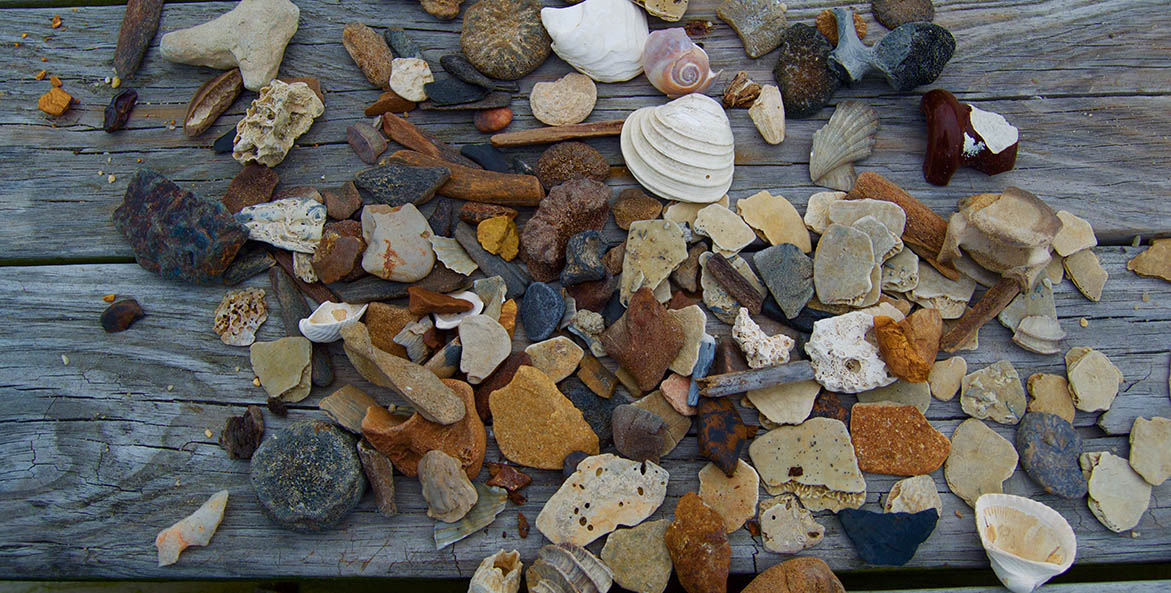
Proggin' can turn up all sorts of treasures.
Morgan Jones/CBF Staff
Writing Prompt: The Story Behind
Materials Needed: nature journal or paper, pen or pencil, proggin' bag*
Assignment: When we find things in nature, often, we wonder where they came from, what they are, and how they got to be in the spot we found them. There could be so many mysteries behind an item washed up on the shore or partially buried in a forest. Sometimes we can identify and learn more about the little treasures we find and sometimes they remain a secret. Find a safe place to go proggin' either on a shoreline, in a forest, or any area out in nature. Make sure to look around closely and try to look for things that might not normally be seen or found by a person just passing through. Begin to collect things that you are the most curious about. Especially look for items that you are not familiar with or are not able to identify.
Once you have collected a few items, choose one that fascinates you the most. Make a few detailed observations about this item and then begin to write a short story all about the item and where it came from. Use your imagination to set the time period, the characters involved, the purpose of the item or the animal it belonged to, and how it came to be lost or disposed of. If you found just a piece of something, imagine it in full, what it was a part of, and maybe how it came to be broken. In your story, try to answer all the questions you might have wondered about when you found your item.
Additional Resources:
- History & Culture of the Chesapeake Bay from the National Park Service
- Chesapeake Bay Treasures from Beachcombing Magazine
Further Questions: What can the stories of the items we find tell us about the history of the Chesapeake Bay? Try to research the item you found to learn more about it. How can we learn more and preserve the stories behind these remnants of the past?
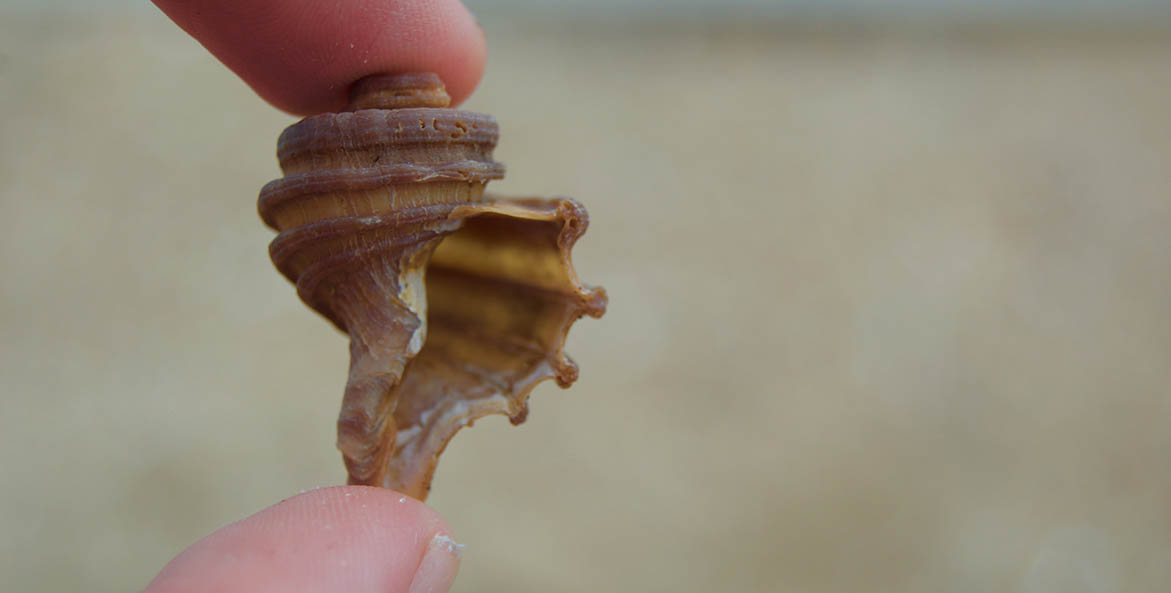
Ecphora gardnerae gardnerae Wilson, the official fossil shell of Maryland is an extinct snail, or gastropod.
Morgan Jones/CBF Staff
Check out more Nature Journaling prompts.

